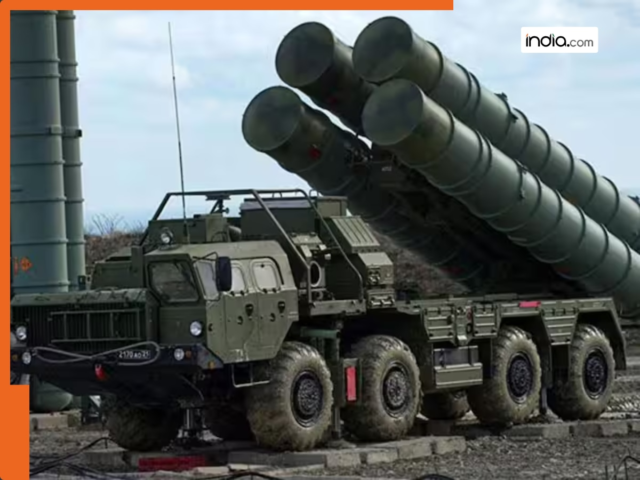According to the Ministry of Defence, defense exports grew by 12 percent. Over the past decade, it has increased 30-fold.
New Delhi: The Modi government reported a 34-fold spike in the value of India’s defence exports, from Rs 686 crore in 2013-14 to Rs 23,622 crore in 2024-25. The notable point is that private sector exports have a greater share with Rs 15,233 crore export in 2024-25, as compared to Defence Public Sector Units (DPSU), whose export value was Rs 8,389 crore for the same year. India and Pakistan are relentlessly working to strengthen their defense capabilities. The defense industry policies, arms imports, and indigenous production of two prominent neighbors and geopolitical rivals in South Asia reflect their strategic priorities and economic capacities.
In this article, we will delve into the state of defense industries, imports, and indigenous production in both countries based on recent facts and figures up to 2025.
Status of the Indigenous Defense Industry
The Modi government’s Make in India and Atmanirbhar Bharat (Self-Reliant India) initiatives have played a pivotal role in India’s defense industry. The Defence Research and Development Organisation (DRDO), Hindustan Aeronautics Limited (HAL), Bharat Electronics Limited (BEL), and private sector companies like Tata, Mahindra, and Adani Defence are playing a significant role in India’s defense production.
Here are some of the key details:
- Over the years, India has developed missiles like BrahMos, Akash, Agni
- India developed indigenous fighter jets (Tejas), tanks (Arjun), warships (INS Vikrant), and drones.
- In the year 2024-2025, the exported defence equipment has extended to over 80 countries
- The country has also exported missiles, radars, ammunition, and surveillance systems.
- According to the Ministry of Defence, defence exports grew by 12%. Over the past decade, it has increased 30-fold.
- The MoD has said that India aims to achieve defence production worth ₹1.75 lakh crore by 2025 and Rs 3 lakh crore by 2029.
- More than 400 licenses have been issued to private companies. Over 2,500 startups are contributing to defence innovation.
Weapon Imports
- India was the top global arms importer during 2020–24, according to the 2025 report by the Stockholm International Peace Research Institute (SIPRI).
- 62 percent of India’s defence imports come from Russia, 11 percent from France, and 10 percent from the United States.
- Key imports include the S-400 air defence system (Russia), Rafale fighter jets (France), and Predator drones (USA).
- It is important to note that compared to 2011–15, India’s arms imports declined by 11% in 2020–24, reflecting a greater emphasis on domestic production.
Swadeshi vs Imports
India, during Operation Sindoor, used indigenous BrahMos and Akash missile systems to foil a Pakistani attack, showcasing the strength of domestic technology.
Notably, approximately 68 percent of India’s defence budget (₹6.2 lakh crore in 2024–25) is allocated for indigenous procurement.
India still relies on imports for high-tech weapons such as fighter jets and submarines. However, indigenous alternatives like Tejas and INS Arihant are reducing this dependence.
Pakistan’s Defence Industry: Dependent on Imports
Here are some of the key details:
- Pakistan is dependent primarily on imported technology and foreign collaboration.
- Government organizations like Pakistan Ordnance Factory (POF), Heavy Industries Taxila (HIT), and Karachi Shipyard contribute to defence production.
- Pakistan produces small arms, tanks (Al-Khalid), and fighter jets (JF-17 Thunder), but largely with Chinese collaboration.
- The design and technology of the JF-17 is based on the Chinese Chengdu J-7.
- Pakistan’s defence industry lacks the capacity to develop advanced weapons like long-range missiles or autonomous drones.
- Indigenous production is largely limited to small arms and basic equipment.
- Pakistan’s defence exports are negligible. The focus remains primarily on meeting domestic needs.
Weapons Imports
Pakistan is among the world’s top 10 arms importers.
According to SIPRI’s 2025 report, its arms imports rose by 43% between 2020–24.
According to the reports, 81 percent of Pakistan’s weapons were imported from China, 8 percent from Turkey, and the rest from other countries like Sweden and Italy.
Chinese J-10C fighter jets, PL-15 missiles, and Turkish Bayraktar drones. These were used against India in Operation Sindoor, but were successfully intercepted by Indian systems.
Dependence: Over 90% of Pakistan’s military equipment is imported, mainly from China.
Indigenous vs. Imported
Indigenous Component: Pakistan’s defense production fulfills only 10–15% of its total needs. Most advanced weapons, such as missiles and drones, depend on foreign technology.
Import Dependency: Pakistan’s economy (GDP around $350 billion in 2025) is limited, making it reliant on low-cost Chinese weapons.
Weaknesses: The limited effectiveness of Chinese weapons was exposed during Operation Sindoor, raising questions about Pakistan’s defense strategy.
India vs. Pakistan: Comparative Analysis
Defense Budget
India: ₹6.2 lakh crore (about $74 billion) in the 2024–25 defense budget — around 7 times more than Pakistan.
Pakistan: Around $10 billion for the 2024–25 defense budget, reflecting its economic constraints.
Also Read:




















































